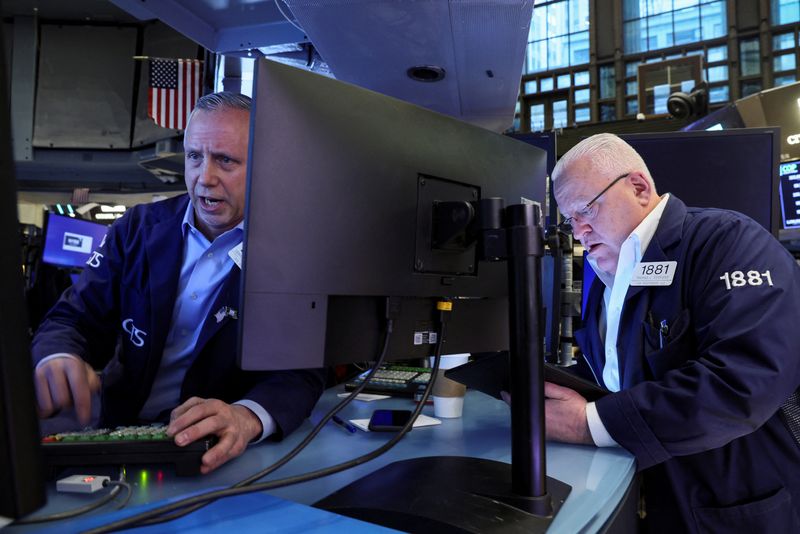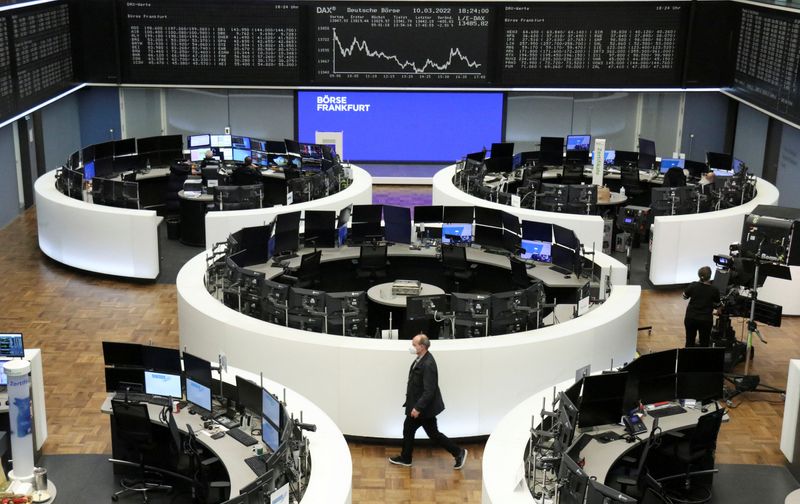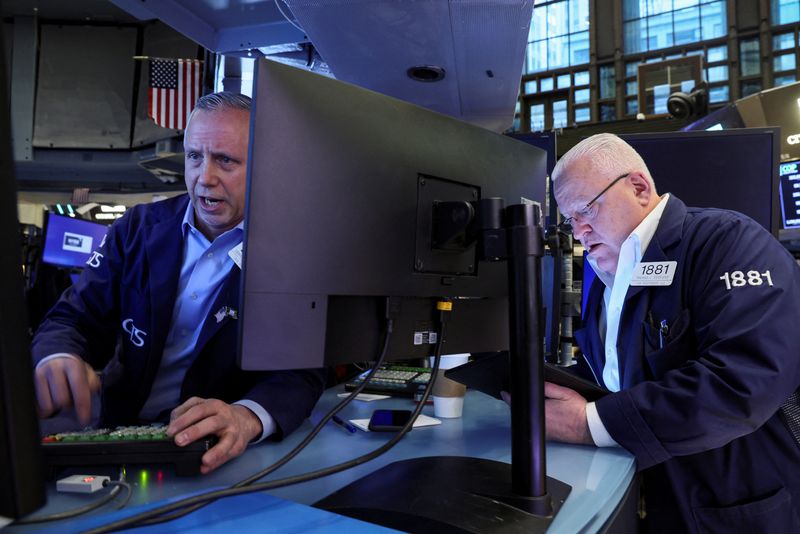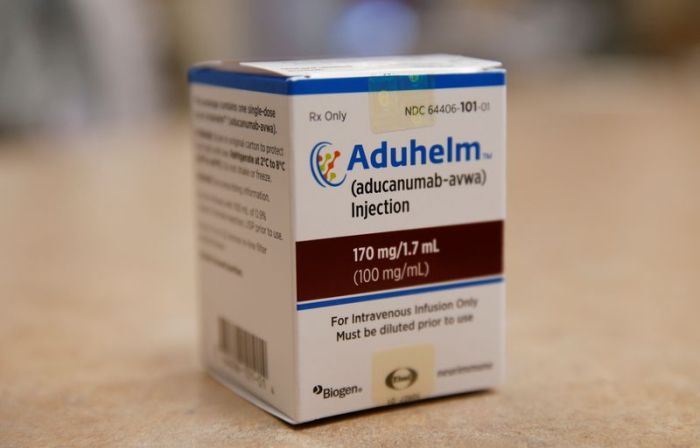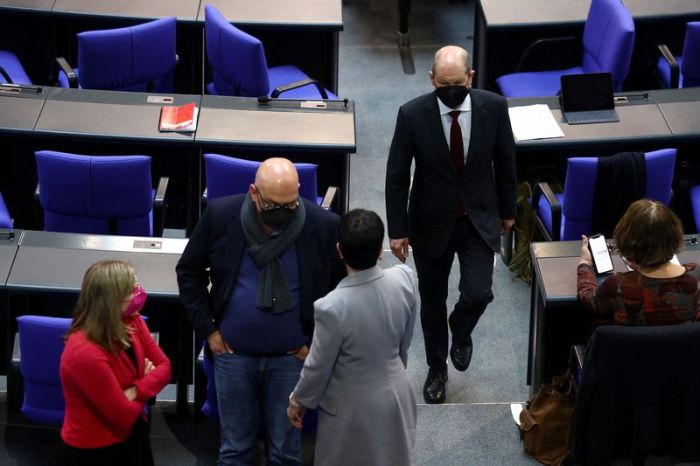NEW YORK (Reuters) – Stock indexes mostly rose on Thursday as investors snapped up beaten-down shares, while the U.S. dollar climbed to its highest in nearly two years and the U.S. Treasury 10-year yield touched a three-year high following hawkish signals from the Federal Reserve.
Wall Street stocks reversed early declines to end the day higher.
Helping to boost the S&P 500, Pfizer Inc jumped 4.3%after the pharmaceutical company said it would buy privately held ReViral Ltd in a deal worth as much as $525 million, its second acquisition in less than six months.
“Things have gotten a little stretched to the downside in the short term, and traders started coming in to pick away at some longs, cover some shorts,” said Michael James, managing director of equity trading at Wedbush Securities in Los Angeles.
“We’ve been trading in relatively thin liquidity the last two weeks, which makes it easier to have (bigger) moves both up and down.”
St. Louis Fed president James Bullard, a voter this year on the Federal Open Market Committee, said the Fed remains behind in its fight against inflation despite increases in mortgage rates and government bond yields. A day earlier, minutes released from the Fed’s March meeting suggested the U.S. central bank’s balance sheet reduction could start next month.
U.S. Treasury yields have jumped along with expectations of faster policy tightening by the Fed and other central banks.
The Dow Jones Industrial Average rose 87.06 points, or 0.25%, to 34,583.57, the S&P 500 gained 19.06 points, or 0.43%, to 4,500.21 and the Nasdaq Composite added 8.48 points, or 0.06%, to 13,897.30.
The S&P 500 ended lower for the last two sessions in a row.
The pan-European STOXX 600 index lost 0.21% and MSCI’s gauge of stocks across the globe shed 0.11%.
In Treasuries, the 2 year-10 year spread widened as traders sharpened their focus on the pace and scope of the Fed’s plans to reduce its balance sheet.
The yield on 10-year Treasury notes was up 3.8 basis points to 2.647% while the 2-year note yield was down 4.5 basis points at 2.457%, leaving the 2-10 spread at 18.72 basis points.
The near 27 basis point widening of that spread so far this week is the most for any week back to June 2013. Last week the spread tightened 27.5 basis points in the sharpest weekly tightening since September 2011. The yield curve inverted last week, signaling to some investors that a recession may be coming in a year or two.
In the foreign exchange market, the dollar index hit 99.823, the highest since late May 2020. The euro hit a one-month trough against the dollar at $1.0871.
The dollar index rose 0.1%, with the euro last unchanged at $1.0878.
The euro has been pressured by what ING analysts called a “double threat” from mounting sanctions on Russia and uncertainty about the French election.
France votes on Sunday in the first presidential election round. While incumbent Emmanuel Macron is likely to re-take the presidency, his far-right opponent Marine Le Pen has been closing the gap, opinion polls show.
Oil settled lower, with Brent crude futures falling 49 cents, or 0.5%, to settle at $100.58 a barrel and U.S. West Texas Intermediate crude falling 20 cents, or 0.6%, to settle at $96.03.
(Reporting by Caroline Valetkevitch; additional reporting by Rodrigo Campos and Gertrude Chavez-Dreyfuss in New York, and Sujata Rao in London; Editing by Kim Coghill, Barbara Lewis and David Gregorio)

